The stories below are incomplete and may have names confused.
Snakes. An unnamed person in the neighborhood decided that there really was a purpose for the garter snakes that appeared in the spring. Combine that with a discarded paint can that still had a little paint in the bottom and you’ve got a good prank. Put the snake in the caan, take it out and nail it to someone’s door.
Patsey Seskey owned an older Studebaker that was looking a little long in the tooth. I believe it was one of her brothers who decided he could re-paint it on the cheap. All it took was a can of Kemtone paint and a couple of friends. Kemtone worked very well on drywall or plaster, but on steel? Oops!
DIY Convertible Everyone likes a convertible, but not everyone can afford to buy one. But, thought Bobbie Auggilia, if you have an old station wagon you can turn it into a convertible. All you need is a couple of hacksaws, some friends and enough time to cut off the roof. He and his friends spent hours, maybe days, and achieved their goal. Unfortunately, they didn’t take into consideration that convertibles have roofs to keep the occupants dry when it rains. It does rain in Pittsburgh.
Low Mileage Low mileage is a mark of a good used car. The odometers in the older cars in the 50’s were mechanically driven,. connected to the drive shaft by way of a speedometer cable. The cable was a thick solid steel wire inside of a metal shield that rotated as the drive shaft turned A mechanism in the dashboard indicated the speed and the distance driven. If the direction of the cable’s rotation were reversed, the speedometer read zero, bur the odometer went backward. Joe an Charlie Saar decided to take a few miles off Charlie’s odometer. Because it takes about a thousand rotations to indicate one mile driven, it is not so easy to turn the odometer back far. However, you can use an electric drill clamped to the drive wire to speed things up. Joe and Charle rigged it up somehow, as they took turns lying under the car holding the drill. They were able to plug the drill in somewhere using multiple extension cords. How much mileage they succeeded to remove is unknown.
Urban Rodeo There was a pig sty on Gershon Street. Not only could you look at and smell the pigs, you could pretend you were a rodeo star. On occasion one ore more of the boys would climb over the low fence and ride a pig. Although the pigs weren’t broncos or bucking bulls, they could get quite upset when someone jumped on their back. More than one of us went home with muddy and smelly clothes, and no trophy.
Catholic School Discipline . Anyone who went to a Catholic school back then knows that the nuns applied corporal punishment to miscreants. One nun, Sister Ottilia, was known for her slaps on the knuckles with a ruler. Often the boys would talk about their tolerance for pain, and that they could hold out until Sister Ottilia gave up. It was either Russell Seskey or Sip (Philip) Saar who tried to prove his masculinity, he cracked before the good Sister reached 20 slaps.
Emergency Room. Sooner or later, many kids end up in the emergency room with minor injuries. Rusty got hurt a little in one of the pick-up football games. He took himself to the Allegheny General Hospital’s emergency room. He noticed the number of people and , from somewhere fo a hold of an arrow. He sat in one of the waiting room chairs holding the arrow in his crotch as if he had been shot. When the nurse came out to bring in the nest patient, he asked “Is it my turn yet?”

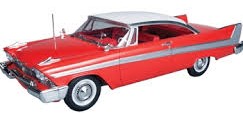 At around age 18, Charlie was able to buy a new car. It was a purple and white Plymouth Fury. Definitely the coolest car on Bly Street. Imagine the car shown in purple and white.
At around age 18, Charlie was able to buy a new car. It was a purple and white Plymouth Fury. Definitely the coolest car on Bly Street. Imagine the car shown in purple and white.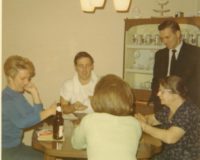 d and girlfriend were present, they would be a team. The games were always team against team. If there were extra people available they would take the losing team’s place for the next game. A fifth person might be swapped in at the beginning of a new game or even in the middle. The adults, except Grandma and Mom, often had adult beverages, thus livening the game. The games were played for a small amount of money, but that was not the purpose. The games were sometimes raucous, but never subdued.
d and girlfriend were present, they would be a team. The games were always team against team. If there were extra people available they would take the losing team’s place for the next game. A fifth person might be swapped in at the beginning of a new game or even in the middle. The adults, except Grandma and Mom, often had adult beverages, thus livening the game. The games were played for a small amount of money, but that was not the purpose. The games were sometimes raucous, but never subdued.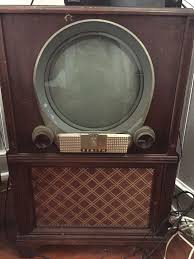 a feature called Phonevision that had not been activated in Pittsburgh. According to Wikipedia: “Phonevision was a project by
a feature called Phonevision that had not been activated in Pittsburgh. According to Wikipedia: “Phonevision was a project by 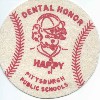
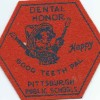
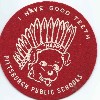
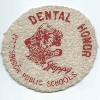
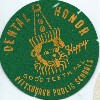 person used a toy dog or hand puppet to talk to the kids. They also used a red dye that they some how put on the kids teeth. They then had the kids brush to see if they brushed properly. If the dye didn’t stick they would issue a Happy Tooth patch. I’m not sure what they did if you didn’t do a good job.
person used a toy dog or hand puppet to talk to the kids. They also used a red dye that they some how put on the kids teeth. They then had the kids brush to see if they brushed properly. If the dye didn’t stick they would issue a Happy Tooth patch. I’m not sure what they did if you didn’t do a good job.